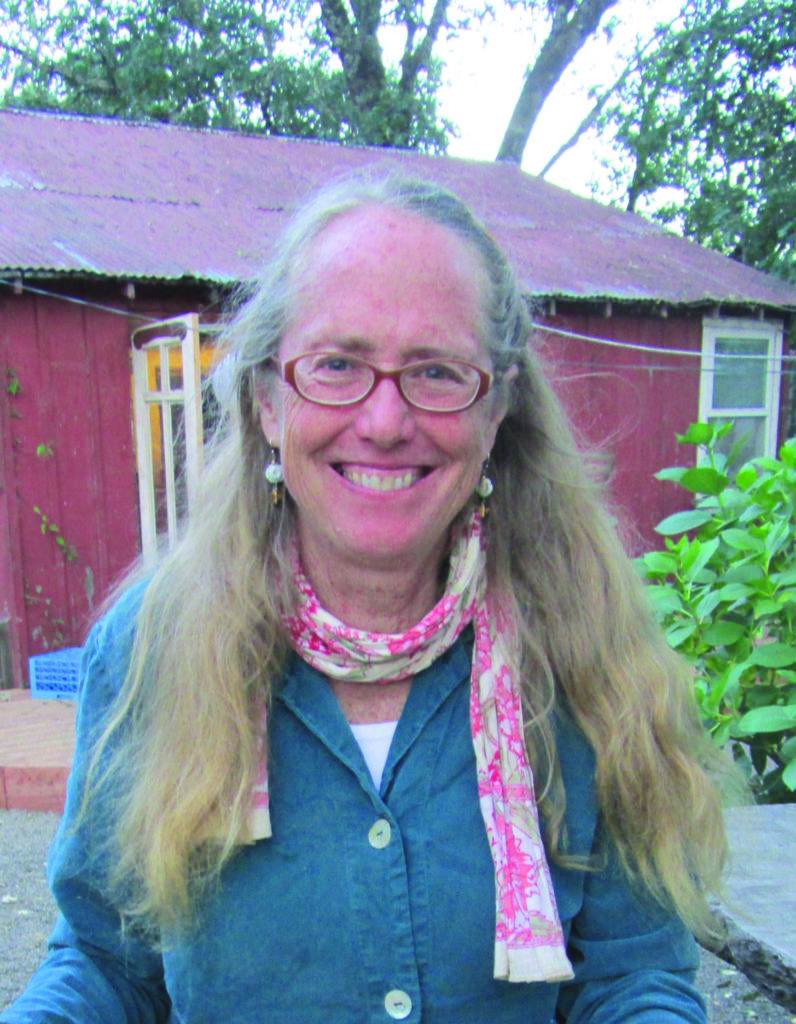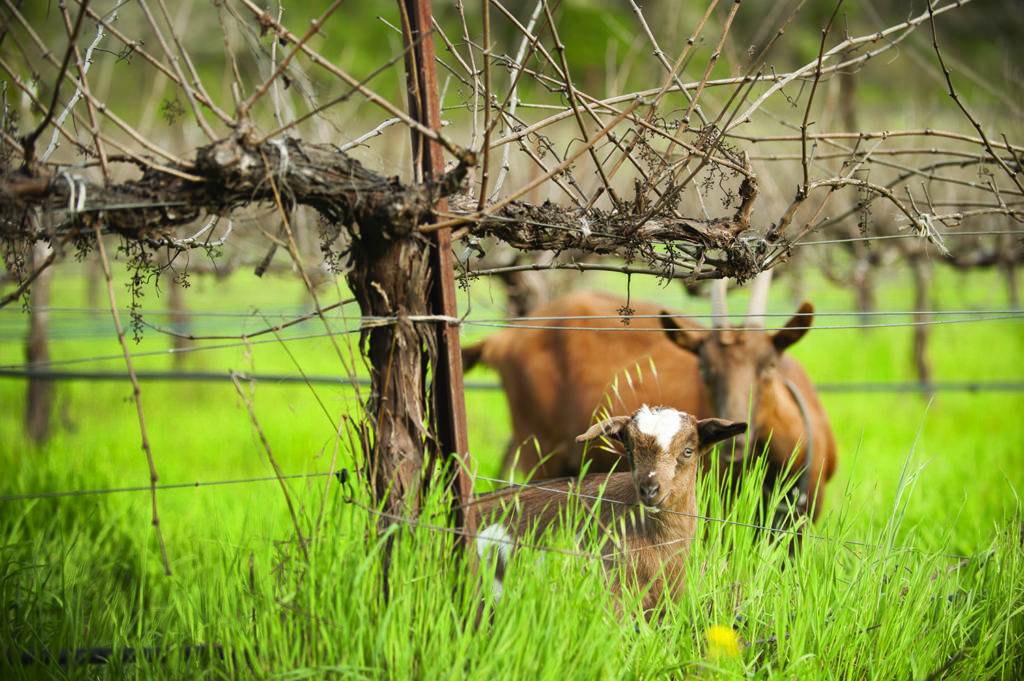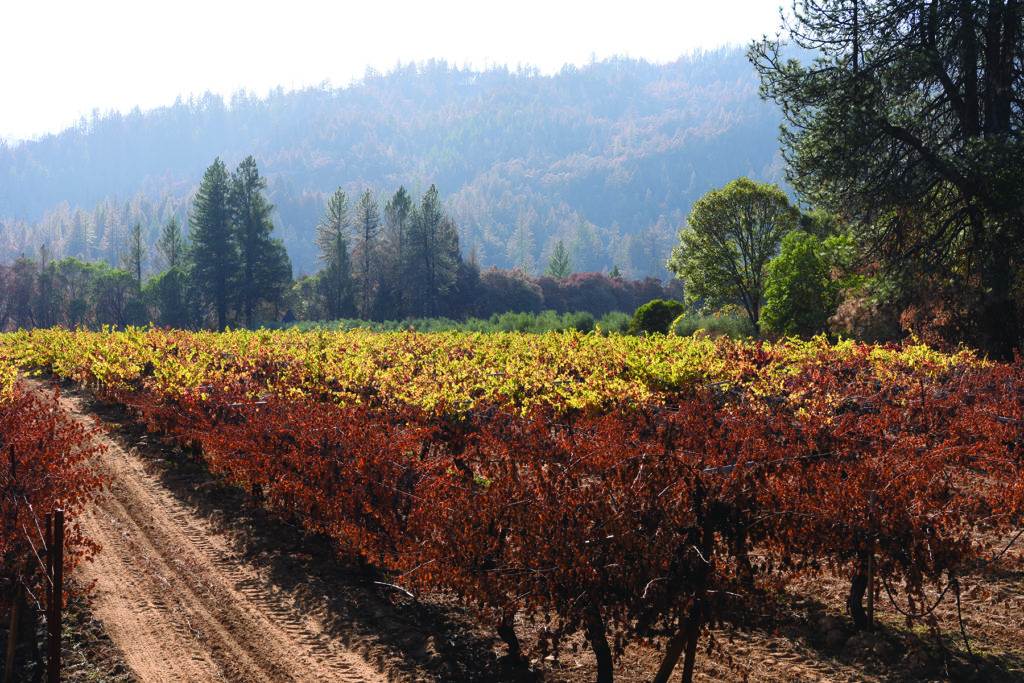Escaping the Mendocino Fire
BY ROB SIDON
Katrina and Jonathan Frey met in 1976 while studying with the famous British horticulturalist Alan Chadwick and later married and in 1980 moved to Jonathan’s family property in Redwood Valley. There, they started Frey Vineyards, the country’s first organic winery. In 1996 they went a step further to become the country’s first certified biodynamic winery based on the principles of Rudolf Steiner. On the evening of October 9, the great Redwood fire ravaged their property. We spoke with Katrina to hear her account of that night and learned of the gratitude she is experiencing in the aftermath.
Common Ground: How did you learn about the fire?
Katrina Frey: It was 12:30 a.m. and I’m not sure what woke me up, but I quickly realized something wasn’t right. There was a strange orange glow in the sky, and I could tell that the ridge that separates where we live in Redwood Valley from Potter Valley was on fire. The high winds—it turns out they were 68 mileper-hour winds—were blowing directly away from us toward the fire, so my heart was in my mouth for our friends and neighbors in Potter Valley. But I had no idea that the wind would change direction and push the fire toward us.
After a half an hour we got calls saying the fire was creeping into Redwood Valley, so we evacuated by 1:30 a.m. I grabbed my passport and some family pictures and some letters. My husband, Jonathan, grabbed his guitar and he dog and we left. We were in the middle of grape harvest, so there were 64 people sound asleep on Frey Ranch, and everyone got out and joined a caravan heading north into the mountains toward Willits.
How is this experience affecting you psychologically?
I am profoundly saddened by the loss of life. I think it’s a miracle that more lives weren’t lost, given the fire’s rapidity and intensity. Cell phones helped. I’m counting my blessings. There were many acts of personal bravery. The wife of one of our employees realized her neighbors weren’t awake and drove through flames and kicked open the door and saved that family with a two-year-old. Then she ran next door and woke the grandparents and their friends. I never had to drive through flames, so I’m feeling lucky to be alive and extremely happy that the 64 people who ranged in age from my one-month-old niece to my 93-year-old mother-in-law were safely evacuated. I’m also grateful to have a piece of land to return to. This kind of experience makes me empathize with others here, many of whom are renters living paycheck to paycheck who didn’t have renter’s insurance and now are displaced. Now I sense what displaced people in Houston, Florida, and Puerto Rico are going through. And this makes me think about people in Syria who are refugees. We didn’t have to leave because of war, so I am very grateful.

What was your property damage?
Originally, there had been reports that the entire property had burned but that wasn’t the case. We had 10 family houses and 2 remained. Our office building and the building that contained our bottling lines burned, as well as various barns and outbuildings and storage sheds. We had a very old redwood grove, which was scorched, and many oaks. Some of those might survive. Being a biodynamic farm we had many animals, and mostly the goats perished. Our herd of sheep survived. They’re literally singed but they survived. We had a cow that was very pregnant, and my brother-in-law turned her out of the barn before we evacuated. When he came back he found mother and calf sitting in a field of ashes perfectly fine. One of our cats just returned after two weeks. The big historic house where my husband and his 11 younger siblings were raised survived as well, as did the metal warehouse where we store bottled goods. But in our little tiny town of Redwood Valley, 280 houses burned to the ground and eight people died, which is devastating.
Frey Vineyards was the first organic winery in the country. Can you tell the story?
Jonathan and I met in 1976 in Northern California, where we worked with the famous British horticulturist Alan Chadwick. Alan was a huge influence in the early days of organics after he started the agro-ecology program at UC Santa Cruz. After learning the fundamentals of organic agriculture, Jonathan and I moved to his family’s property in Redwood Valley and started planning to begin a winery, which of course we wanted to be organic. Jonathan and his brother had already planted eight acres of good-quality grapes in high school, and by 1980 we formed a bonded winery and made 2,000 cases that first year. Organics wasn’t popular back then, as we listened to jokes about apples with worms in them. To be an organic winery means that your fruit is grown without [synthetic] herbicides and pesticides, and the wine must be processed without synthetic additives such as sulfites. Over the years we’ve developed techniques to be able to make award-winning wine without using synthetics and last year produced 220,000 cases.
You took it a step further by starting the first biodynamic winery. Can you explain the distinction between biodynamic and organic?
The concept of biodynamics was started by Rudolf Steiner, who was an Austrian scientist and philosopher who lived in the early 1900s. He introduced the concept of the farm as a self-contained organism where you are meeting the fertility needs of the farm with the resources of the farm. So you bring in farm animals and make your own compost. Biodynamics is the gold standard of organic agriculture because it’s a more holistic imagining of what a farm is. Biodynamic farming is overseen by Demeter, which is the oldest certification system in the world. It was started in 1924 in Germany. Every year there is an international conference where people from over 75 countries come, such as from Demeter USA, Demeter France, Demeter Brazil, and they can introduce improvements to the standards.
There are hundreds of Demeter-inspected biodynamic farms across the country. While there had previously been Demeter-certified vineyards in this country, we were the first to become a certified winery in 1996.
What’s the ratio of biodynamic to organic?
Of our 350 acres, 300 are Demeter-certified. Of the 220,000 cases we produced, a third are biodynamic. We also buy grapes from 40 certified organic growers in Lake and Mendocino Counties for our organic product.
How do you think the fires will affect the overall wine market in the next years?
I think the overall damage to the vineyards is rather minimal. Vineyards don’t typically burn because there’s not a lot of undergrowth in vineyards, and they’ve been irrigated through the summer. It’s unusual to have vineyards wiped out, but that did happen because this was such a strong firestorm. For Frey Vineyards only about 4% of the 350 acres was destroyed. After replanting, it takes between three and five years for vines to produce. I have been so busy trying to pull the pieces together here that I have not read much about what the overall impact might be, but I know the greatest losses were in Sonoma County, where many vineyards lost important parts of their infrastructure.

Is worldwide demand for Northern California wine such that everything that is produced will be absorbed?
Yes, it’s a worldwide market and Northern California is utterly recognized as a world-class premium wine production region, so there’s always going to be great demand for our wines. In Europe, due to hailstorms in the early summer when the fruit was young and vulnerable, there were big losses. Then they also had bad weather during harvest. Parts of France and Italy have historic lows, like only maybe 40% of what they typically average. That will influence the market for California wines, as Europeans will not have enough to fill their typical pipelines.

How are you taking care of yourself personally in the aftermath of this tragedy?
Well, I just moved into a house, as we have some friends who have a bed-and-breakfast that they have generously taken off the market and rented to us—at least until the first of the year. Things change every day in terms of what our personal plans are. It’s a little overwhelming. Last night I was able to sit and read stories to my little two-year-old granddaughter and six-year-old grandson, so that was very comforting. Tonight there’s a big community meeting for the town of Redwood Valley, where we are very involved in relief efforts. There’s a huge outpouring of love and support ranging from cash donations to food and clothing. Helping each other is really beautiful. I don’t think I’ve ever hugged more people than in the last two weeks. I’m exhausted but realize ultimately that I have not lost anything truly important.
Any parting comments to our readers, many of whom have enjoyed your great wines for decades?
We so appreciate all of the concern that’s been flooding in from all over the country. We will soon have a mobile bottling line and be back in production. More importantly, let’s collectively continue to strive to convert more land to organic. There’s plenty of evidence that climate change can be mitigated by good organic farming practices, where we apply compost and pull carbon back into the soil where it belongs—and keep our planet from heating up.
Rob Sidon is editor in chief and publisher of Common Ground.